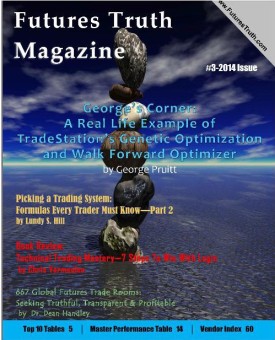Strong seasonality pointing up…
My end of month trading systems are triggering tonight together with a single lone bullish pattern and with my profit factor system. If we see a close below 194,4 both my LOSS systems are triggering together with Bollinger one. But today is thursday after OPEX DAY. Tipically highly bullish day when over 200 SMA. Look the numbers below. I will enter a long trade and trust it wherever the close will be.
| NT | %W | PF | AW | AL | MAX | MIN |
| 156 | 75 | 3,76 | 0,5 | -0,4 | 2,1 | -2,5 |
| T-score | 5,06 |









Really awesome blog! I based my first systematic trading system on much of your work. Just wanted to let you know that I’m getting that the third Thursday night of the month is bullish, not the fourth Thursday night (today).
LikeLike
Thank you James! The one I posted was for the “Thursdays after OPEX Friday, with a close above 200 SMA”. It’s not always the fourth. I checked the backtest code and it was right. I don’t know. The third Thursday had some good results in the recent years but going back to more than ten years ago, profits goes up and down. How was your test made? Anyway you were right, it was not a good night for longs at all… this time!
LikeLike
OK — thanks for clarifying (I will have to look at days with opex as the reference day). However, I’m surprised that you’re not getting good results for the third Thursday night going back 10 years — I’m getting that this is the best nth weekday of the month setup. I’ve checked my code and reviewed the trades on SPY — appears correct to me — since 2000, 68% wins — last 5 trades all positive. I’m doing simpler studies like this in Amibroker, but will drop into Matlab or C for other work. In terms of seasonality changing — that’s an interesting challenge — ideally one’s algorithm would detect such changes and adapt the seasonality score — but this is not easy given small sample sizes.
LikeLike
I know… This is the main problem when approaching patterns trading too. It is difficult to judge when a patterns is approaching failure. I simply look at the equity curve. When it start to behave badly I put the pattern in a stand and see mode. I would use statistics t-student tests to detect when the results starts to own to a different distribution of returns. But it becomes difficult when approaching so many patterns and time consuming. Do you rely also in seasonality that are revealing only on recent years or do you require a full time set constant price behavior?
LikeLike
I pick out the days/nights with strength or weakness beyond ~2 sigma level of %wins with emphasis on the recent few years, but also look at up to 10 years for confirmation.
LikeLike